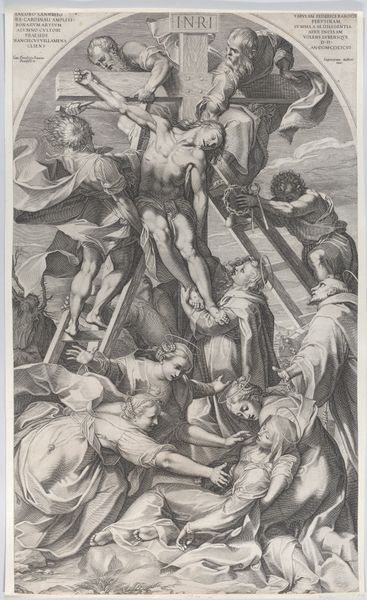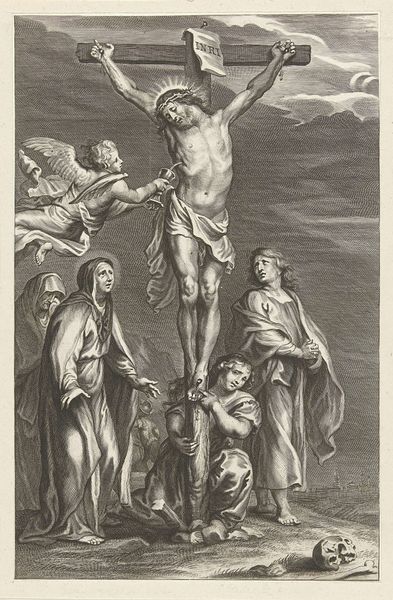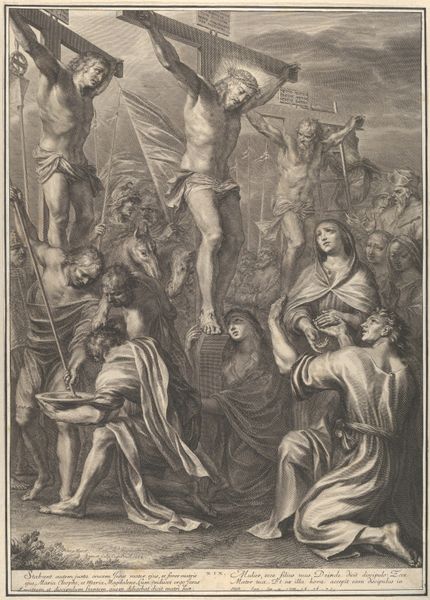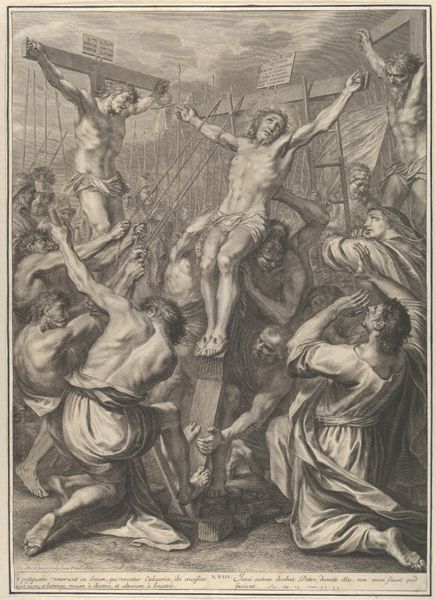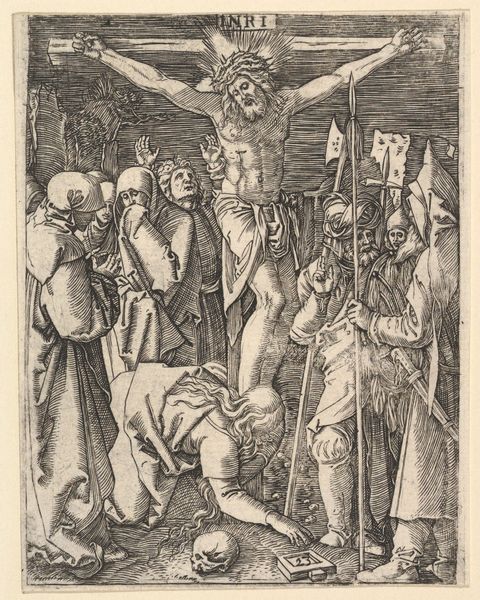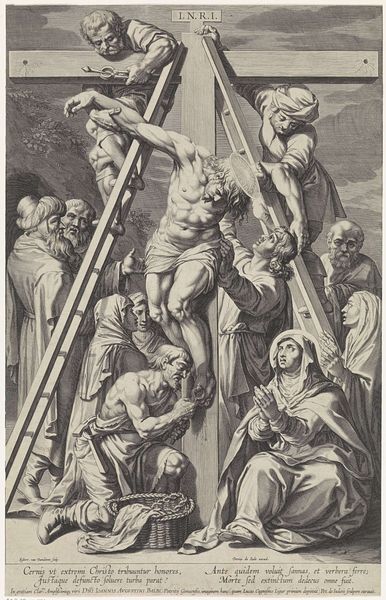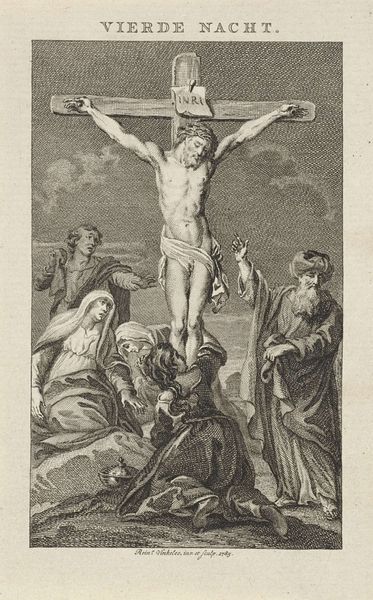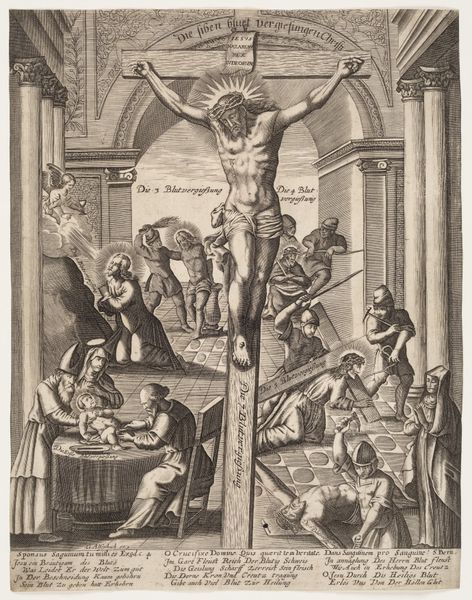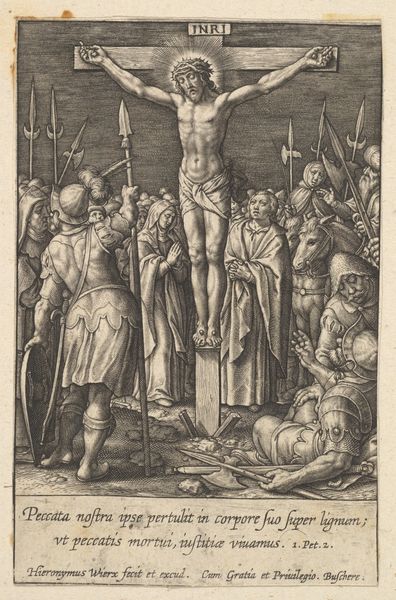
Dimensions: height 526 mm, width 405 mm
Copyright: Rijks Museum: Open Domain
Editor: We are looking at "Kruisiging," or "Crucifixion," a print made by Jan Gerritsz. Visser between 1812 and 1821, currently held at the Rijksmuseum. It's incredibly detailed, with lots of figures and a dramatic landscape setting. It's all in black and white. It strikes me as theatrical, almost operatic, in its depiction of such a solemn scene. What catches your eye in terms of the formal qualities? Curator: What interests me most is how the artist employs line and value to create a dynamic and emotionally charged composition. Observe the stark contrast between light and shadow. Where does your eye travel within the frame, and why? Editor: My eye is drawn upward, following the bodies, but then held back by the strong horizontal of the cross. What does that kind of tension suggest to you? Curator: It suggests a calculated attempt to portray opposing forces – the earthly and the divine. The vertical aspiration is cut short by the stark reality of human suffering and limitation. Consider the texture created by the engraving technique. How does the quality of line impact your reading of the figures' emotions? Editor: I see what you mean. The fine lines used to depict the faces – the Virgin Mary especially – make her grief appear delicate, almost refined, even in such distress. Is that intentional, or just a result of the medium? Curator: The artist likely made a deliberate choice to use the capabilities of the medium to emphasize certain qualities. The precision and control afforded by engraving allow for subtle gradations of tone and detail. Now, consider the composition as a whole. Does the artist favour symmetrical balance or asymmetrical tension, and how does this contribute to the overall meaning? Editor: There's definitely a lot going on; it isn't quite balanced. It's made me look closer at the individual figures and how their poses contribute to the emotion. Curator: Precisely. Close formal examination often provides insights into an artwork’s intended purpose and reception.
Comments
No comments
Be the first to comment and join the conversation on the ultimate creative platform.


